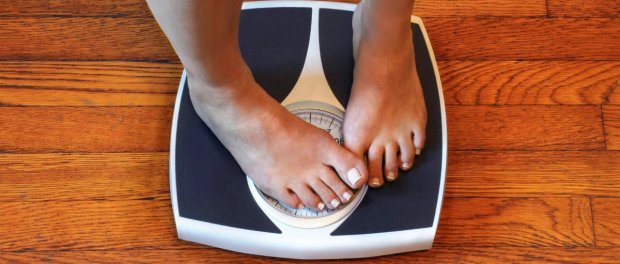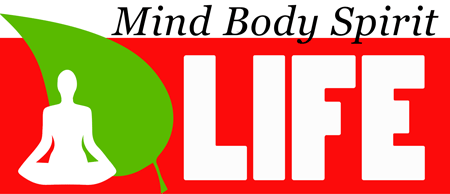10 Exercise Tips for Professionals – Aging and beating the middle age spread

Weight has a way of creeping up on you. Sitting at my desk for long hours and snacking led to my waistline expanding. I was in denial but people who hadn’t seen me for a while would always say “You put on weight”. I was upset with myself, how could I let this happen. I was doing well in other areas of life but failing at this.
Then, it was time to accept responsibility, forgive myself and focus again. I started working out and challenged myself and obtained my fitness instructor certification.
Many people often ask me how I did it. These are the tips I share in my fitness classes that have yielded the best results for myself and others.
- Being Fit is a Lifestyle and not a one month, lose fat fast programme. Forget the fad diets and the pills and adopt a healthy lifestyle. Find what works best for you.Be prepared to work hard. It takes time, you didn’t gain all that weight in a day and you will not lose it in a day. This is not a 100M dash but a marathon.
- Be Realistic about your weight loss goals. Don’t just focus on numbers on the scale. Don’t compare yourself with others and avoid those entertainment magazine covers. Some of these celebrities achieve their bodies by spending ridiculous hours working out whilst others wouldn’t look the way they did, without all the implants, liposuction, photoshopping, shapewear…etc
#1: Focus on the Internal benefits of exercising, not only on the exterior looking good part, but overall good health, so if you do not see quick changes you will not get de-motivated. Exercise can help prevent or delay many of the problems associated with getting older. It can increase energy levels and brain activity, reduce cholesterol, boost your immunity, help you sleep better and increase your self-confidence. Weight-bearing exercise can also prevent osteoporosis.
Waist Size Matters– Individuals who have more belly fat, or visceral fat, are at a significantly higher risk for heart disease, high blood pressure, diabetes among others. The reason for this is that visceral fat surrounds the vital organs. A few inches on the waistline is an external sign of an increase of fat in the arteries. In a nutshell, belly fat is very dangerous! A waist size over 35 inches in women and over 40 inches in men greatly increases the risk of chronic diseases.

“If exercise could be packaged into a pill, it would be the single most prescribed and beneficial medication in the nation.” Robert M. Butler, M.D at Mt. Sinai Medical School, New York.
#2: Diet is Key – Abs are formed in the kitchen. Make healthy choices. Reduce your calorie intake. As we grow older our bodies need fewer calories because we are losing muscle mass. Eat balanced meals from the 5 food groups. Limit your intake of highly refined, processed, sugary and fatty foods. Try swapping these foods for high-fibre alternatives. One of the best side effects of eating a high-fiber diet is that it can help to maintain or lose weight. Clinical studies have also shown that dietary fiber lowers blood cholesterol levels, consequently, improving cardiovascular health. Drink lots of water. Water burns fat. Water suppresses hunger. You’ll also save your kidneys and liver from chronic overwork. When your kidneys are taxed from too little water, your liver has to take over. Once a week I usually have a raw vegetable juice.
Watermelon is a super food. I eat lots of it (once it’s not too sweet) because of the numerous benefits. It cleanses toxins from the body, has anti-aging properties. Eating watermelon before exercise helps cut recovery time and boost performance. It also replaces electrolytes and helps with joint &muscle pain.
#3: Reduce stress levels and Get adequate rest – the stress hormone cortisol occurs at higher levels when you have too much stress or not enough sleep. When cortisol levels rise, the fat cells in your abdominal area are the first to become filled.
#4: Commit to an exercise programme (Get Medical Clearance from your doctor first!) for at least 3 to 5 days per week for 30 minutes. Set a regular time. With age comes a decrease in metabolism, energy and strength. If you don’t work out at all, you’re going to lose muscle tissue every year and gravity will take over.
- For shifting fat from the midriff, the best exercises are those involving multiple muscle groups as compound exercises for e.g burpees, squats with shoulder press, chest fly with alternate leg raises etc as well as isolated abs exercises. It’s also critical to work the opposing muscle, the back which can often be ignored. There is no such thing as spot reduction so to see results you will have to target muscles from multiple angles.
- As professionals our schedules are so crammed that slaving for hours at the gym may not be feasible. No time for the Gym, No excuse! You can download free workouts from YouTube. I have over 100+ workouts from the top professional trainers. Have fun with your workouts. Try to always change things up a bit, not to get bored and to avoid a training plateau.
#5: Proper form and Mind body connection is essential, concentrate on the muscle contraction with each movement. Always engage you core. Proper breathing techniques is also important as well. Know your body – Push yourself but know your limits. Stop if you feel dizzy or upset. Additionally, it’s important to recognize problems for example my knees creak so I always reduce plyometric exercises since they can be hard on joints.
#6: Start Slow – If you’ve been inactive for a while,you don’t have to rush into exercising. it’s important to build up activity gradually. Always warm up and cool down. Walking is a perfect way to start exercising. Try beginner workouts, go at your own pace, do modification exercises where necessary and also hit the pause button and take short breaks as needed.
- Have proper exercise gear.
- Invest in a suitable vitamin and minerals supplement for your age group.
- You may also need a protein supplement or add lean protein to your diet.
#7: Make sure your exercise routine incorporates:
- Strength Training strengthens your muscles and bones. As you age, it is necessary to increase this if you want a toned physique. I use dumbbells, ankle weights and resistance bands. The more muscle you build, the more calories your body will naturally burn each day on its own.
- Aerobic Exercises increase your breathing and heart rate. These exercises help your heart, lungs, and blood vessels. Maintaining aerobic fitness through middle age and beyond can delay biological aging by up to 12 years and prolong independence during old age. ( British Journal of Sports Medicine)
- Flexibility – Stretching can prevent injury and help your body stay stay limber
I have found Pilates to be an effective exercise for overall toning as well as cinching the waist as it engages core stabilization. It looks easy but can be a bit challenging.
#8: Stay Active – The first thing to bear in mind as you get older is to keep moving. Commuting to work? Get off at an earlier stop and walk to work. Sometimes I go for short walks on my lunch hour. I also take the stairs at work. If you don’t stay active, all the things you’ve always enjoyed doing and taken for granted start to become that little bit harder as you get older.
It’s not what you do once in a while, it’s what you day in and day out that makes the difference.” – Jenny Craig
#9: Keep Motivated by focusing on your reason for exercising. Have short-term goals like losing weight for the upcoming Christmas office party, a vacation…Long term goals being alive for your children, not being a health burden for your family.
#10: Get Support – It’s easier to keep going with support. Consider taking a group class or exercising with your spouse or a friend. Keep a Log and Pre-plan workouts – I save a folder with my daily workouts for the week. It helps to keep me focused especially when I don’t feel like working out.
Celebrate your Accomplishments – Be Proud of yourself. One day a week on the weekends, I take a break when I have met my weekly goals and treat myself but I don’t get too crazy like do all you can eat buffets.
Bonus Tip – Wear a waist belt intermittently. Not too tight and don’t wear when eating, sleeping or exercising as it would restrict breathing. I have seen great results with this as it also helps with lower back pain when you have to sit for long periods.
Practice proper posture – Poor posture causes your back to curve and your tummy to look big. Hence, try to walk straight with your chest out and stomach in. Even when you are sitting, try to lean your back on the chair and avoid slouching. The more you slouch, the more your stomach will pooch.
It’s never too late to start a fitness regimen, and there’s no reason to give up existing exercise if you’re in good health and your doctor approves of your activity.
Furthermore, adopting a healthy lifestyle may not guarantee a life free of medical complaints but just do your part and keep doing your best. If all you can do is walk, then walk. Do what you can do. Take small steps, be consistent, be persistent, believe in yourself and most importantly don’t give up! Every little bit counts.
Follow Brigette on LinkedIn for her lastest post.




